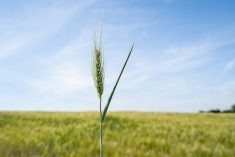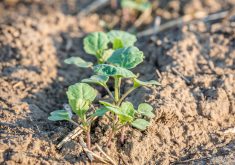Up until about the last decade the advantage North American farmers had over those in Russia, Ukraine and South America was the use of machinery, technology, genetics and agronomics to produce higher yields. This kept per acre costs low enough to generate profits.
Over the last 10 years farming in these other regions has caught up. They are surpassing yield expectations, giving them the pricing advantage when it comes to selling into the world market.
Through the Cold War years and the breakup of the Former Soviet Union most farmers in the area had little or no access to cash or credit to purchase machinery, seed, fertilizer or chemicals to help improve their yields. They existed as subsistence farmers or abandoned the land to find work elsewhere.
Read Also

Claas brings 1000 Series SP forage harvesters to Canada
In mid-August, Claas unveiled its new line of Jaguar forage harvesters at an event in Visalia, California, deep in the heart of that state’s dairy region.
Things were very similar throughout South America. With a devalued currency, farmers faced huge inflation costs for inputs. Tariffs on grain exports meant they were squeezed on both ends. It was enough to send many small farmers to the big cities to find work.
It was over the past 10 to 20 years that a number of things started to happen that would move agriculture production forward by leaps and bounds in these areas.
Times change
Abandoned acres were brought back into production in the FSU as the region’s governments looked for ways to generate revenues from their lands. They encouraged international investors to buy or lease farmland and get it back into production.
In South America, millions of acres were deforested, adding new land to the picture. Here as well, governments allowed foreign investment in agriculture as a way to get foreign currency into the economy in the wake of severe inflation and currency devaluation.
This brought about a major change in grain production capabilities. Investors came with money, machinery and technology, allowing them to maximize production capabilities and generate profitable earnings.
Meanwhile, major ag industry players were investing heavily in these regions. They saw the potential and wanted a piece of the profits that would come from growing, buying, processing, selling and moving grain to market. Governments, industry and private investors have invested billions of dollars to build infrastructure to move grain to market quickly and cheaply.
Add to that the amalgamations of fertilizer, seed and chemical companies around the world as they ramp up for massive new demand for their products and services in these regions, and all of a sudden countries that we thought were 25 years behind us in production technology and access to genetics and inputs are now, in some aspects, ahead of North American farmers and continuing to push for greater improvements.
Canadian farmers once had the advantage of government involvement in the development of new seed varieties for Canadian use. This has disappeared. World multinational companies now dominate the seed genetics business, which means anyone willing to pay can have access to the latest in genetics. This is arguably the biggest change that has helped push the progression of grain production in these regions.
How do we compete
We can assume the genetics, fertilizers and chemicals that we’re using will be available to everyone, so we won’t have any real advantage there.
Machinery and technology will also be pretty much the same everywhere, so no real advantage there either.
It will come down to the basics of land and weather as the primary determining factors as to who will produce the largest volume and/or the best quality grains at a lower cost.
A number of other things can influence North American competitiveness. These include currencies, foreign trade policies, tariffs, world oil prices and world ocean freight rates to name a few.
Getting bigger is not always the answer. Getting better at what you do is the first step, then maybe getting bigger makes sense.
I believe remaining competitive will come down to farmers’ expertise and management experience, along with the continued adaptation of technology and genetics.
Growing more bushels of higher quality grain per acre and keeping costs under control by running lean and mean operationally is what will help give farmers here the edge.
















